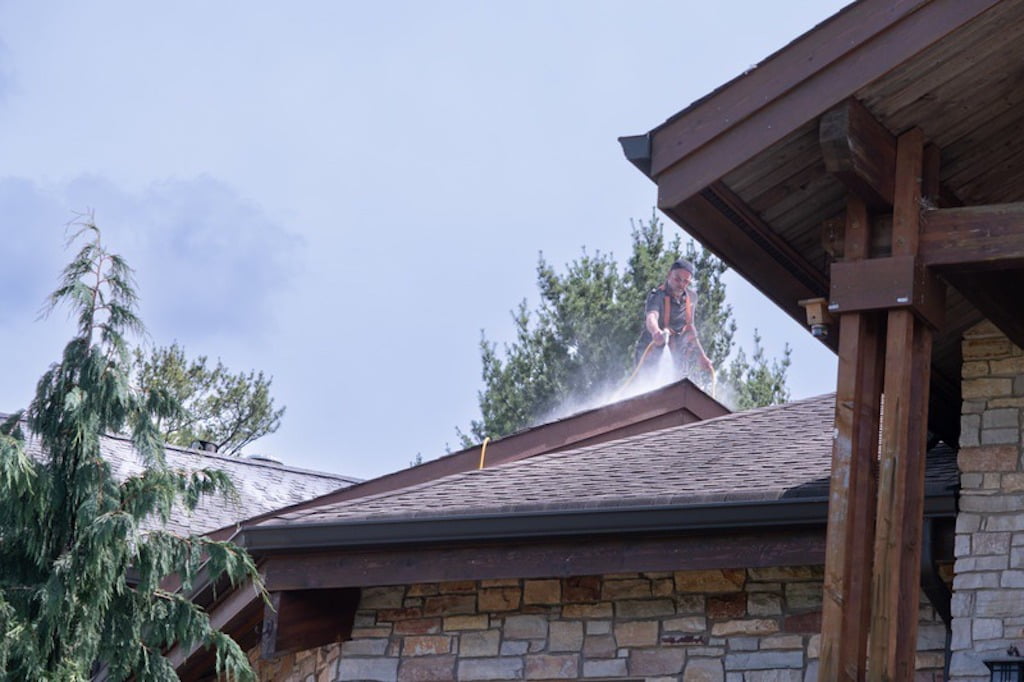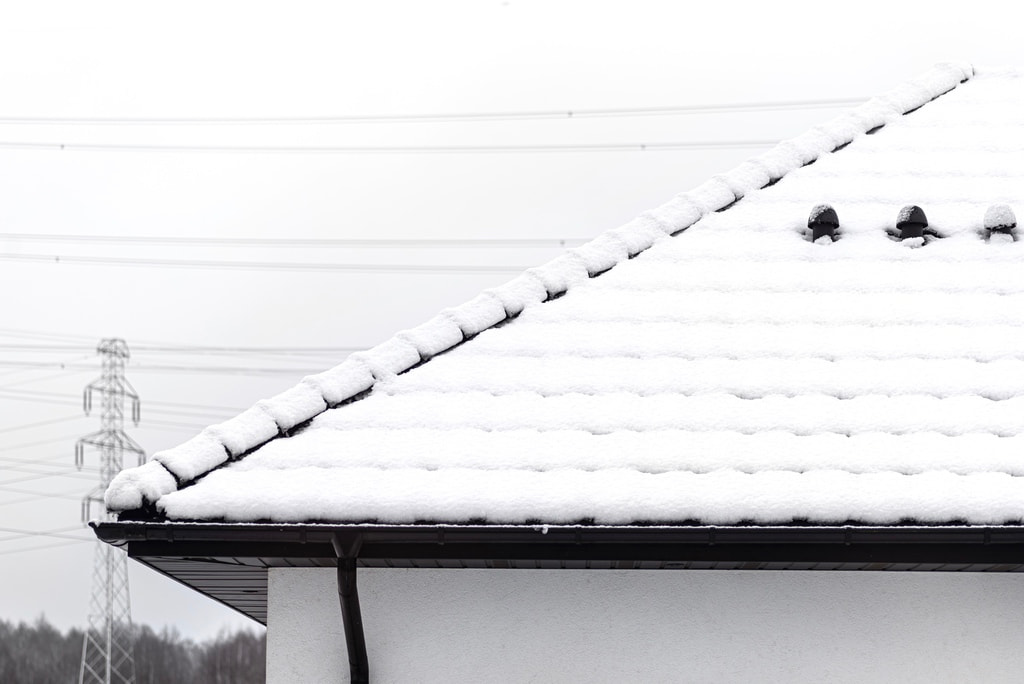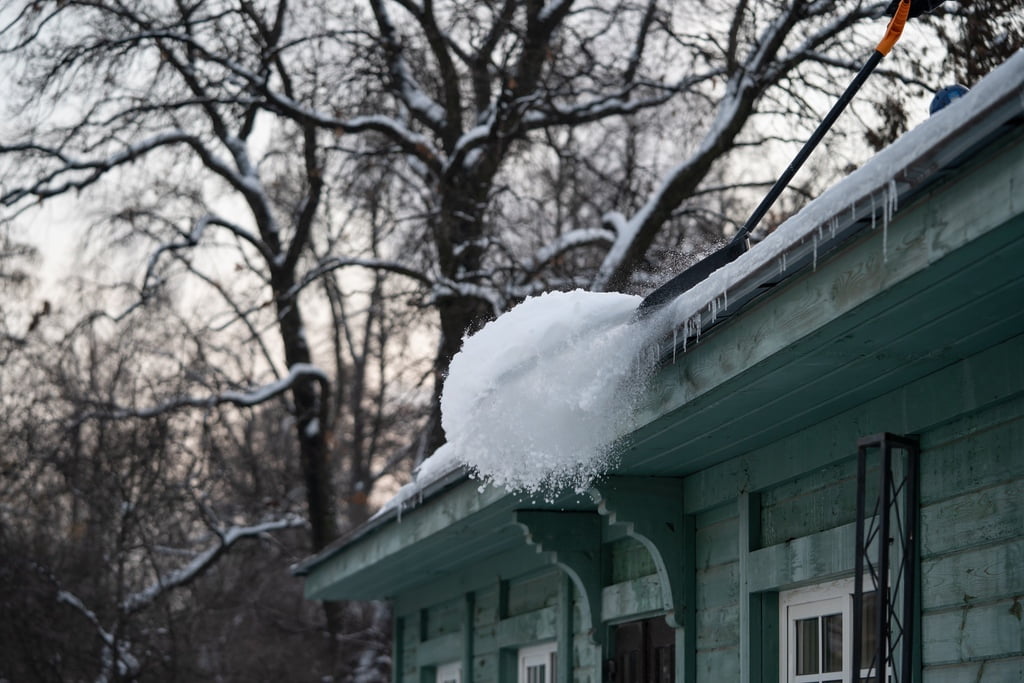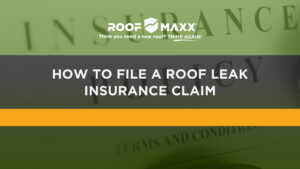Summary
- Understanding your roof’s snow load capacity helps prevent damage or collapse during heavy winter storms.
- Snow load is calculated using the depth and density of the snow on your rooftop.
- Preventing snow buildup with proper ventilation, insulation, and snow removal techniques can reduce the chances of damage.
- Regular roof maintenance and addressing minor issues early are key to extending the life of your roof.
- Roof rejuvenation treatment can also help restore flexibility to shingles that have lost granules or natural oils over numerous winters.
As winter approaches, it’s important to prepare your home for cold weather, and that includes understanding how much snow your roof can handle. Roofs are designed to support specific loads, and too much snow can lead to damage—or worse, collapse. We’re here to help with this guide that shows you how to estimate the snow load for your roof and provides tips for keeping it in better condition as the years go by and the seasons change. Learn how to take the best possible care of your roof this winter, and in the coming years.

Roof Maxx Can Help
Winter conditions can also put strain on asphalt shingles—causing them to lose granules and drying out the natural oils that keep them flexible. But restoring the flexibility and durability of your shingles can be as easy as treating them with Roof Maxx. Get a free estimate and find out how we can help you avoid the high costs of total roof replacement for up to 15 years.

Average Snow Load for Residential Rooftops
On average, most roofs can support around 20 pounds of snow per square foot. But this varies depending on factors like:
- The type of roof
- How old the roof is
- The area where you live
Areas with heavy snowfall often have roofs built to handle greater loads, while regions with mild winters may not. Knowing your roof’s snow load can help you prevent costly damage before it happens.
How to Calculate the Snow Load for Your Roof
To figure out the snow load on your roof, you need to consider both the depth and the density of the snow. Here’s how to ballpark both measurements:
Measuring Snow Depth on Your Roof
- Use a yardstick or measuring tape to measure the depth of snow in several spots on your roof.
- Avoid measuring near edges or uneven areas; aim for flat sections to get an accurate average.
- Calculate the average snow depth by measuring in multiple spots and dividing the total by the number of measurements.
- Measuring in several different areas is important because wind and roof pitch can cause uneven snow accumulation.
Estimating Snow Density on Your Roof
Snow varies widely in weight depending on whether it’s fresh and fluffy or wet and compact. Here’s a quick breakdown of the standard densities for different snow types (measured in pounds per cubic foot):
| Type of Snow | Snow Density (lbs/ft³) |
| Fresh snow | 3.75 |
| Damp fresh snow | 6.87 |
| Settled snow | 15.61 |
| Wind-packed snow | 23.41 |
| Very wet snow | 46.82 |
| Ice | 57.25 |
Using These Measurements to Estimate Snow Load on Flat Roofs
To estimate the snow load on a flat roof, use this simple formula: Snow Load = Snow Density (lbs/ft³) × Depth of Snow (ft)
Example
If you have 2 feet of settled snow, which has a density of 15.61 pounds per cubic foot, the formula for calculating the snow load is: Snow Load = Snow Density (15.61 lbs/ft³) × Depth of Snow (2 ft) The result is approximately 31.22 pounds per square foot of snow load on the roof. Keep in mind that flat roofs are at higher risk for snow load issues since the snow doesn’t slide off easily.
Extra Steps for Pitched Rooftops
If you have a pitched roof, you’ll also want to account for the angle of the slope. More complex calculations are required for sloped roofs, so we typically don’t recommend doing this by yourself. But using an online snow load calculator can help. Remember: the steeper your roof, the better it will shed snow naturally. This reduces the risk of too much snow building up during the winter.

Tips for Keeping Snow Off Your Roof
Preventing snow buildup can save you a lot of trouble during the winter. Here are some key ways to keep your roof clear:
- Improve Ventilation & Insulation: A colder roof actually prevents snow from melting and refreezing, which can lead to ice dams. Make sure your attic is well-insulated and ventilated to keep the roof temperature down.
- Use a Snow Rake: For light snowfalls, a snow rake is an easy way to clear snow off the roof, especially if your roof is at risk of accumulating heavy snow.
- Install Heat Cables: These can be placed along the edges of your roof to melt snow and prevent ice dams from forming.
- Remove Ice Carefully: While it’s tempting to knock icicles off the roof, this can damage gutters and downspouts. If ice builds up, it’s better to call in a professional to avoid harm to your roof.
- Prevent Ice Dams: Ice dams occur when snow melts, refreezes, and blocks water from draining off the roof. Installing heat cables, keeping your attic well-ventilated, and regularly raking your roof can prevent these from forming.
More Tips for Winter Roof Care
Taking care of your roof doesn’t stop with snow removal. Regular maintenance is vital for ensuring your roof lasts as long as possible, even in harsh winter conditions. Here are some additional tips:
- Inspect for Damage: After a snowstorm or ice event, inspect your roof for any signs of damage, such as sagging, leaks, or cracked shingles.
- Address Small Issues Quickly: Fixing minor problems as soon as they arise can prevent them from turning into major (and expensive) repairs later.
- Rejuvenate Aging Roofs with Roof Maxx: If your shingles are starting to lose their flexibility but are still in generally good condition, Roof Maxx can help extend their lifespan. Our all-natural, plant-based treatment restores flexibility to your shingles, allowing them to withstand the elements and protect against moisture more effectively.
With Roof Maxx, you can add up to 15 years of life to your roof without the cost and hassle of replacement. Contact us today to see if your roof is a good fit for our eco-friendly treatment.
FAQs
How much snow is too much for my roof?
Most roofs can support about 40–45 inches of fresh snow or 20 inches of packed snow before reaching their limit. One inch of ice is equivalent to about one foot of snow.
What should I do if my roof is sagging under snow?
If your roof is sagging, it’s crucial to remove the snow as soon as possible. Use a snow rake to clear the area safely, or call a professional if the situation looks severe.
How can I prevent ice dams?
Ice dams form when snow melts and refreezes at the edges of your roof, blocking water from draining. To prevent ice dams, make sure your roof stays cold by improving attic insulation and ventilation, and consider installing heat cables.
Can I knock icicles off my roof?
It’s best to avoid knocking down icicles, as this can damage your gutters and roofing materials. If you have large icicles, it’s safer to have a professional handle their removal.
How do I remove snow from solar panels on my roof?
To remove snow from solar panels, use a soft brush to gently clear the snow. Avoid scraping or using sharp tools, which could damage the panels.





